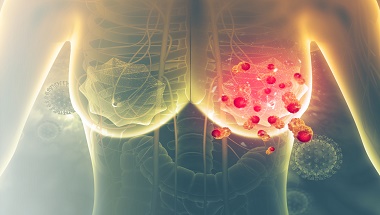
Around 7000 people diagnosed each year in England with early breast cancer have HER2-positive disease. HER2, which stands for human epidermal growth factor receptor 2, is a protein on the surface of cancer cells which makes them grow and divide.
Trastuzumab emtansine is a type of targeted cancer drug. Trastuzumab attaches to the HER2 receptor allowing the emtansine to go into the cancer cell where it becomes active and kills the cancer cell.
Clinical trial evidence shows that in people who still have some cancer cells remaining after chemotherapy to shrink their tumour and HER2-targeted treatment, trastuzumab emtansine increases the time people remain free of disease compared with trastuzumab alone. It is not known if trastuzumab emtansine increases the length of time people live because the final trial results are not yet available.
Trastuzumab emtansine costs on average £51,000 per patient for a course of treatment at its full list price. The company has agreed a commercial arrangement which makes trastuzumab emtansine available to the NHS with a confidential discount.
Around 800 people will be eligible for treatment with trastuzumab emtansine under this guidance.
Meindert Boysen, deputy chief executive and director of the Centre for Health Technology Evaluation at NICE, said: “Additional treatment options that can increase the amount of time in which people remain free of disease after surgery, and perhaps stop it from coming back altogether, are particularly welcome. We are therefore pleased to be able to recommend that trastuzumab emtansine is made available routinely for people with HER2-positive early breast cancer after surgery.”
NICE’s final guidance on trastuzumab emtansine is due to be published next month.